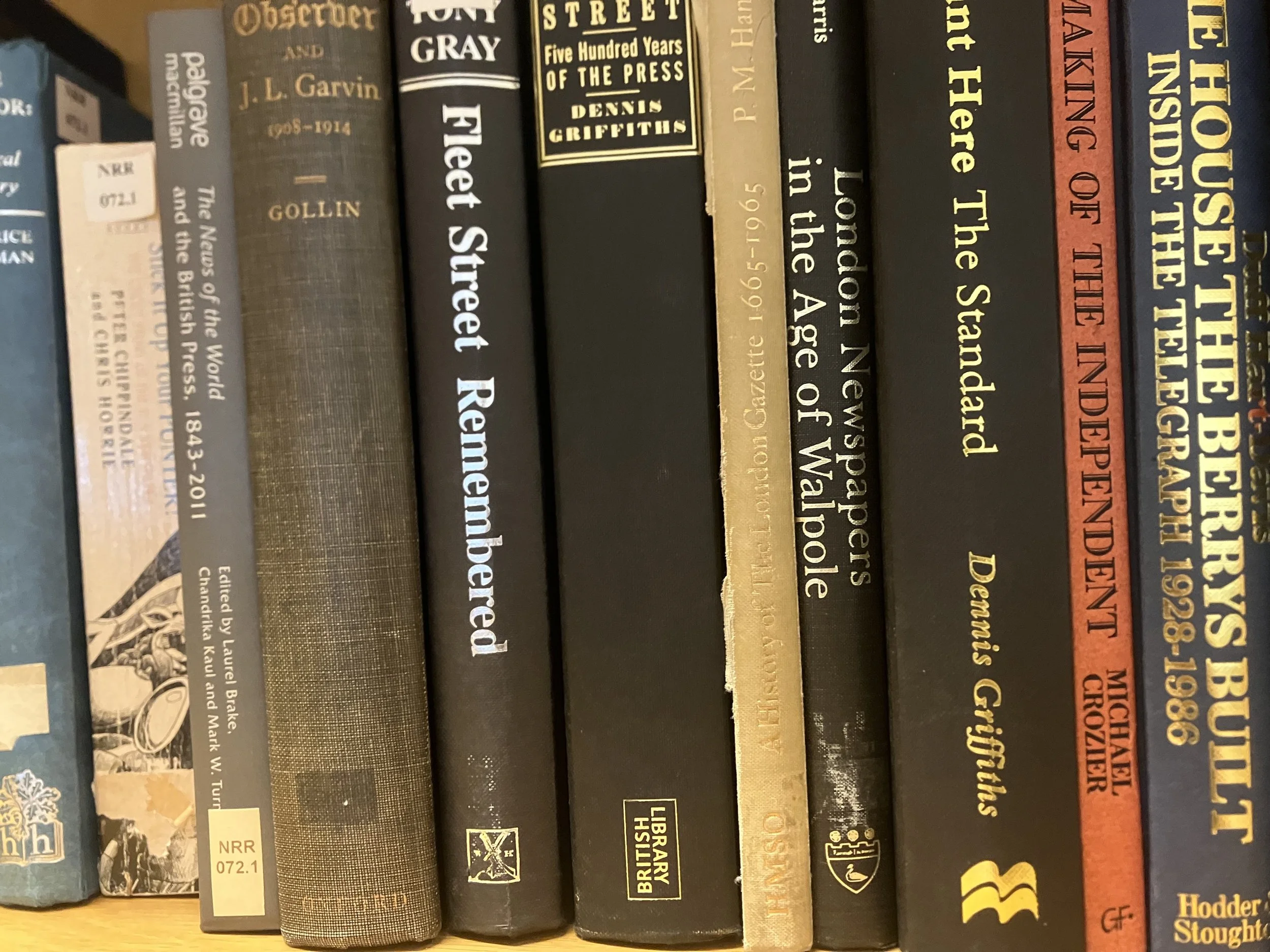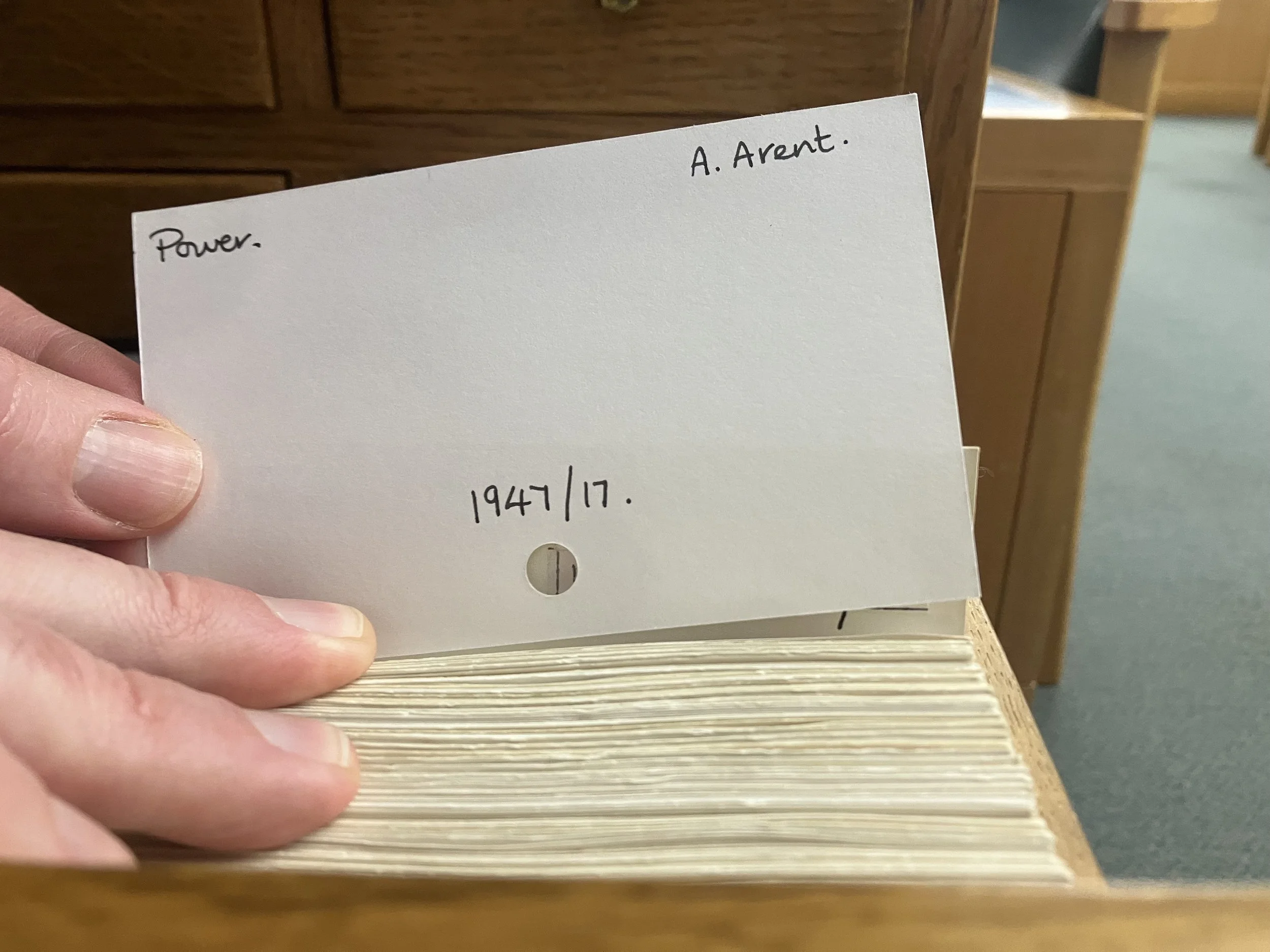Wed 1 October
News Room
Sitting in the ‘Newsroom’. Somehow even in this calm there is a buzz of excitement alongside the buzz of computer terminals. Someone sits with a giant yellowing newspaper on a Perspex stand. Specific accoutrements of knowledge and the storage of it. Purpose made stands. Print cases. Book jackets. The essential props of reading and research.
Apt that outside of these walls this is a week of critics -my day here interrupted by visits from press teams. BBC World service. The Times. ITN arriving at the house later – to be confronted by the microfiche unit I have on a cash and carry trolley in the front room. We’ve become used to news items and the way they seem to hollow out the meaning of the work we do. The way we can no longer design the story or control the message in these contexts. The cuts that happen if we dare mention anything about the need for systemic change. The anodyne tones. In these worlds we are not allowed to be artists - just ‘east end arty types’ – language used to patronise and defuse. And yet behind that annoyance is also an education in the way the industry works and is shifting. Talking to photographers awaiting news of redundancy. Of the move from text to visual content. Print to online. Photographer to videographer. Budget cuts and censorship. Of the need for a free press. For good investigative journalism. For holding power to account and the fights that take place for this.
This room is exciting. The microfiche units stand like theatres of an era. Political stages. Theatres of War. No photos allowed of the larger than broadsheet scale front pages that line the walls. HOLD THE FRONT PAGE. 9 11. News is everywhere. Discarded papers still up on screens. Fonts. Texts. Black and white images. References crowd my mind - the different form of living newspapers in the Harry Potter films – characters screaming out of pages. The cut and paste collage of Peter Kennard, the headlines of Led by Donkeys. There are shelves of books about ‘the news’, the rise and fall of Fleet Street. Murdoch. The business of news in the digital age. Out of Print. Fake news.
The day is a day of discoveries. Emerging from the Lord Chamberlain’s Collection – navigating volumes and index cards under the enthusiastic and knowledgeable guidance of Alex Lock, Modern Archives and Manuscripts Curator. The blue pen of censorship as the Lord Chamberlain regrets to inform playwrights of their silencing. The instructions described in the readers comments: ‘cut the bum scene.’ Cuts and editing. As this is a collection of plays from Britain’s stages each of us admits to secretly not holding much hope that we’d bring up much from the list of New Deal‘ Living Newspaper’ Plays in this archive but in the stained yellow index cards topped by bold PO font on orange we find POWER.
What makes a church hall in St Albans seek out and put on the ‘Power’ play by US playwright Arthur Arendt in 1947 – a decade after it was staged in a New York? A world and war between them. The reader’s notes are brief and descriptive – a quick summary of what the play POWER covers. There is a ? over Nationalisation. This was 1947. The Welfare State was in creation and this was a year of Nationalisation in Britain - of infrastructure and industry. What made St Saviours Church Hall put this play on? A radical vicar? A coincidental link to the US? How can I find out?
At home I have the microfiche unit waiting for me and a stack of newspapers. This is the time to experiment. Conceptually. Materially. What is microfiche/film made of? Who makes and breaks the news? How do we consume it now? How does a cut up collage methodology apply across material and digital in. Who might be involved in this experiment? Who am I sitting opposite in this newsroom? – retired news editors. Journalists. Authors. If the New Deal’s ‘Living Newspaper Unit’ employed out of work journalists what skills could this employ? Am I worked directly with archive or am I making a new form of archive informed by the materials? One that addresses the analogue and digital. Our shifting ways of knowing and communicating. Is print the ultimate output or is it something in between print, digital, performance?
On the red brick walls of the terminal hotel is written in chalk “50 yards- British Thieves 1868-2025’, A pink car of the kind found in Asphalt Legends is parked up on the forecourt of the Midland Grand Hotel. After it was a Grand Hotel and before it became grand again, the hotel lay derelict. In that dormant time I was one of a group of artists who occupied it to put on an exhibition in which I filled an upper floor servants quarters rooms with glowing coals in a work called ‘Smog Nocturne’ - a reference to extraction and exploitation and the behind the scenes labour of luxury that remain my reoccupation. Even the roof slates are Imperial. I spot the same chalked text scratched larger with more ferocity further down the station walls. ‘Any Day Now. Hellfire Times.’
Notes to research: Mayday Rooms. Newspeak House. British Library kit. Postroom. British Library’s own past exhibition on the news.




